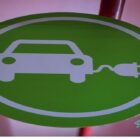What are the operation hours of EV charging stations?
It is essential to know about the operation hours of EV charging stations. The information helps you to prepare for charging your EV. Various EV stations can have different operating hours. For example, the operation hours of an ev charging station in Lajpat Nagar can be different than in another place. The blog here provides relevant details on the topic. Continue reading to know more.
Public Charging Stations
Public charging stations are an essential component of the EV charging network. These stations are often strategically located in public areas, such as shopping malls, parking lots, and highways, to provide convenient access for EV owners. Public charging stations typically have extended operating hours, often operating 24/7, to accommodate the diverse schedules of EV users.
Residential Charging Stations
Residential charging stations, on the other hand, are primarily installed at homes and apartments to facilitate overnight charging. These stations are usually accessible to the EV owner at all times, providing the convenience of charging their vehicle while they sleep. As a result, residential charging stations operate 24/7 and are not restricted by specific hours of operation.
Workplace Charging Stations
Many companies and organizations have recognized the importance of providing workplace charging facilities to encourage employees to transition to electric vehicles. Workplace charging stations are typically available during business hours and cater to the charging needs of employees during their working day. These stations may have limited hours outside of regular business hours, but they still contribute significantly to the overall accessibility of EV charging infrastructure.
Fast Charging Stations
Fast charging stations play a critical role in enabling long-distance travel and reducing charging time for EV owners. These stations utilize high-power charging equipment to rapidly replenish the battery capacity of electric vehicles. Fast charging stations are often located along major highways and at rest areas, ensuring that EV owners can quickly charge their vehicles during their journeys. These stations typically operate 24/7 to accommodate the needs of travelers, ensuring they can access reliable charging facilities regardless of the time of day.
Networked Charging Stations
Networked charging stations, also known as smart charging stations, are connected to a central management system that allows operators to monitor and control their operations remotely. These stations may have varying operating hours depending on the specific management system and the policies set by the operator. However, networked stations often strive to provide extended operating hours to cater to the needs of EV owners throughout the day.
Seasonal Variations
In some regions, the operating hours of EV charging stations may be influenced by seasonal factors. For instance, in areas with extreme winter conditions, charging stations may reduce their hours or implement temporary closures due to safety concerns. Conversely, in tourist destinations, charging stations might extend their operating hours during peak travel seasons to accommodate the influx of visitors.
Integration with Renewable Energy Sources
As the world transitions towards renewable energy sources, many charging stations are integrating solar panels or wind turbines to generate electricity on-site. These charging stations may align their operating hours with the availability of renewable energy, maximizing the utilization of clean power. Consequently, their hours of operation may vary depending on factors such as daylight hours and weather conditions.
Emergency and Backup Power
Some EV charging stations are equipped with emergency and backup power systems to ensure uninterrupted operation during power outages. These stations may have extended hours or operate round the clock to provide essential charging services during emergencies or unforeseen circumstances.
You can seek advice from experts
The operation hours of EV charging stations are designed to cater to the diverse needs of electric vehicle owners. Public charging stations often operate 24/7, ensuring accessibility at any time of day or night. Residential charging stations are available around the clock, providing convenience for EV owners charging at home.
Workplace charging stations align their hours with regular business hours, accommodating employees’ charging needs during the workday. Fast charging stations operate 24/7 to facilitate long-distance travel, while networked stations aim to offer extended hours through remote management.
Seasonal variations, integration with renewable energy, and emergency power systems further influence the operating hours of EV charging stations. With a robust and flexible charging infrastructure, the transition to electric mobility becomes increasingly viable, encouraging more individuals to embrace the benefits of electric vehicles.
It is a good idea to seek advice from experts who are knowledgeable about EV charging stations. You can contact them and ask relevant questions. You can expect a quick response to your every query from a professional.
A straightforward step is to visit the service provider’s official website. Take your time to explore its various sections. You will receive relevant information. Accordingly, you can plan to charge your EV. It is essential to know the locations. When you are planning a road trip on an EV, you should be confident about the operation hours of various charging stations at different locations.







